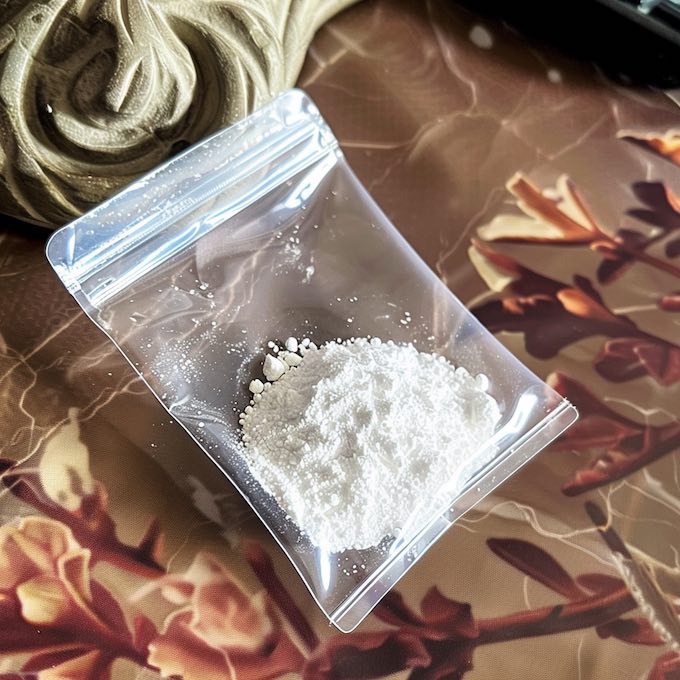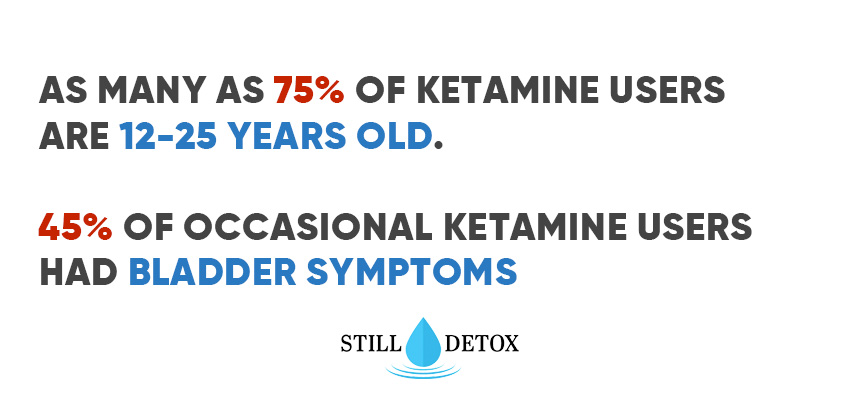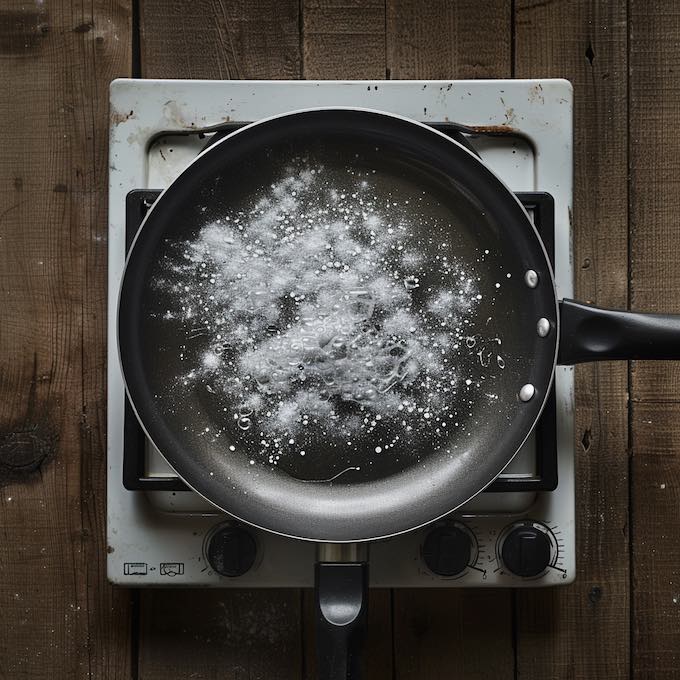The number of people suffering from ketamine bladder issues is on the rise, with experts noting a significant increase in bladder problems among young people due to recreational ketamine use. Ketamine, known on the street as Special K, typically appears as a crystalline powder or liquid. Chronic use of this drug can severely damage the bladder lining, causing it to shrink.
This damage can lead to:
- Frequent urination
- Infections
- Painful urination
- Blockages
- Incontinence
It’s important to understand that while other drugs like cocaine, MDMA, and LSD can cause harm and addiction, none of these party drugs affect the body in the same way ketamine does, especially when it comes to the bladder.
When someone offers you ketamine at a festival, or if your friends are using it, think twice. Even occasional use can lead to serious, long-term health consequences, including ketamine bladder damage.
What is Ketamine Bladder Syndrome?
Ketamine bladder syndrome, also referred to as K bladder, is the ulceration and damage to the lining of the bladder caused by prolonged ketamine use. Initially, individuals may experience discomfort in their bladder area, but as the damage progresses, frequent urination becomes a constant issue—sometimes every five to ten minutes. This condition can progress to painful urination, and in severe cases, users may even notice blood in their urine, a condition known as hematuria.
The condition is also known by several other names:
- Ketamine-Induced Cystitis (KIC)
- Ketamine-Associated Ulcerative Cystitis
- Ketamine Bladder Syndrome
These terms all describe the bladder damage caused by recreational ketamine use. According to Dr. Kenneth W. S. L. Tung, a leading urologist at the University of California, San Francisco, “The only effective solution for severe ketamine bladder damage may be surgery, including the removal of the bladder itself in extreme cases”
Most recreational users of ketamine are young, with up to 75% between the ages of 12 and 25, storing up problems for their future health. Young users of ketamine are facing serious future health issues, including potential kidney failure that might require dialysis or a kidney transplant.
What causes Ketamine Bladder Syndrome?
The bladder, a sac-like organ located behind the pelvic bone, stores urine and expands when full. However, when ketamine is used, its metabolites enter the bladder and cause significant damage to the bladder lining. The epithelial cells, which serve the important function of preventing urine from leaking into the bladder wall, become damaged. This damage prevents the bladder from holding urine properly, causing it to leak through and reach deeper layers of the bladder wall, which leads to further destruction.
Long-term ketamine use can also affect other organs, including the gallbladder, which also contains epithelial cells. According to research published by the National Institute on Drug Abuse (NIDA), growing evidence suggests that ketamine can damage several other organs beyond just the bladder, leading to broader systemic damage.
Symptoms of Ketamine Bladder Damage
Ketamine bladder syndrome manifests in both early and advanced stages, with symptoms becoming progressively more severe. Here’s a breakdown of the symptoms:
Early Symptoms:
- Urinary Frequency: Increased need to urinate more frequently than usual.
- Urinary Urgency: A sudden, intense urge to urinate, even when the bladder is not full.
- Pelvic Pain and Pressure: Discomfort or pain behind the pelvic bone.
Advanced Symptoms:
- Incontinence: Involuntary leakage of urine.
- Hematuria: Presence of blood in the urine, causing it to appear brownish or orange.
- Reduced Bladder Capacity: The bladder becomes stiff and unable to expand properly due to damage to the bladder wall.
- Erectile Dysfunction (in men): Difficulty achieving or maintaining an erection.
Ketamine bladder symptoms can appear as soon as a month after starting ketamine use and often worsen over the course of a year. The effects are long-lasting and can be debilitating.
According to the study published in Science Direct, one serious complication that can develop from ketamine abuse is hydronephrosis. Hydronephrosis is a condition where one or both kidneys become swollen due to a buildup of urine, causing pain in the flank (side) area (Science Direct, 2020).
Importantly, the study found that the urinary tract symptoms associated with ketamine abuse may persist for up to a year even after the person stops using the drug (PubMed, 2023)
K-Cramps: The Deceptive Pain Relief of Ketamine
K-cramps or Ketamine cramps refer to intense spasms in the abdominal muscles, which can last from 30 seconds to up to ten minutes. These cramps are excruciating, and many ketamine users mistakenly believe that taking more ketamine will relieve the discomfort. However, this only exacerbates ketamine bladder damage and leads to more severe symptoms and increased pain over time.
A study published in the Western Journal of Emergency Medicine noted that “Some individuals with ketamine bladder disorder do not initially recognize the source of their bladder pain and tragically continue to use ketamine, worsening the damage to their organs”
Injecting Ketamine: A Protection from Ketamine Bladder?
Ketamine is often cooked to form crystals that are snorted, but some users believe that injecting the drug can avoid bladder damage. However, this is a misconception. Regardless of whether ketamine is snorted or injected, it can still lead to irreversible ketamine bladder damage.
Is Ketamine Bladder Damage Reversible?
The damage to the bladder caused by ketamine is irreversible. The only way to prevent further harm is to completely stop using ketamine. This condition can severely damage other organs and may even result in death if left untreated. If you experience symptoms such as frequent urination, severe abdominal cramps, or blood in your urine, it’s critical to seek emergency medical help immediately.
How Much Ketamine Causes Ketamine Bladder Damage?
It’s difficult to pinpoint a “safe” amount of ketamine, as it affects individuals differently. However, studies show that 27% of occasional ketamine users experience bladder symptoms, even when they use the drug just a few days each month (NIDA, 2023).
Ketamine Addiction
As with other substances, tolerance to ketamine builds quickly, meaning users need to take larger amounts to achieve the desired effect. This escalation leads to severe physical and mental health problems and can trap users in a cycle of dependency. Ketamine addiction is often underrecognized compared to substances like heroin or crack cocaine, but the reality is that ketamine addiction can result in significant damage to the body, including permanent ketamine bladder damage.
It’s crucial to seek help before the addiction worsens. Ketamine addiction treatment is most effectively managed through inpatient programs, which address both the addiction and the resulting health issues, including ketamine bladder damage.
Call us now at 556-2677 for Ketamine Addiction Treatment
Sources:
National Library of Medicine Ketamine bladder syndrome: an important differential diagnosis…
BJUI Recreational ketamine: From pleasure to pain
National Library of Medicine Changes to the bladder epithelial barrier are associated with ketamine-induced cystitis











